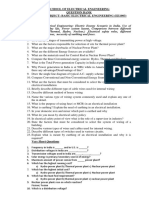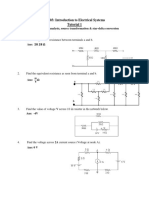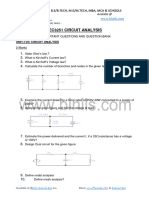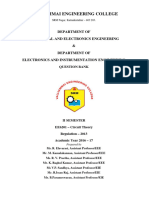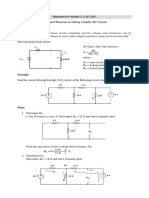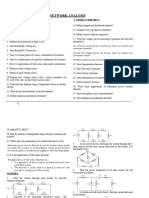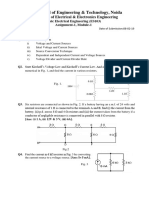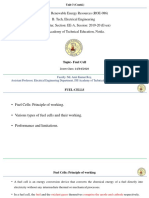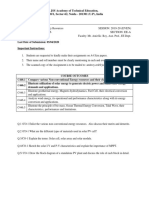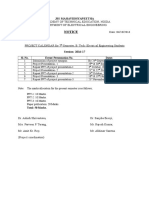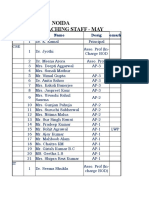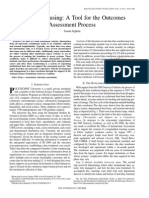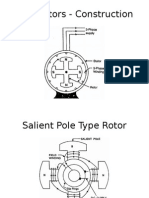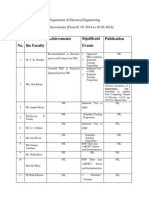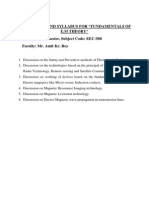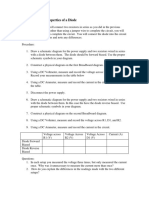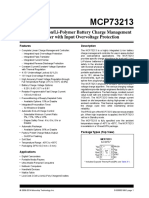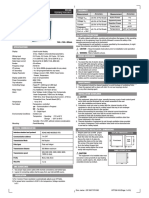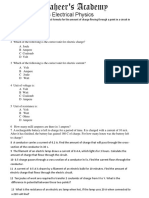0% found this document useful (0 votes)
420 views2 pagesElectrical Engineering Assgn Question
1. An assignment on basic electrical engineering concepts is given to students of the Electrical Engineering Department at JSS Academy of Technical Education in Noida, India.
2. The assignment contains 15 questions involving circuit analysis techniques like source transformation, mesh analysis, nodal analysis, superposition theorem, Thevenin's theorem, and Norton's theorem. Students are asked to solve circuits involving resistors and voltage sources.
3. Questions also involve deriving star-delta transformations and calculating equivalent resistances between terminals for various resistor networks. Students must show their working and submit their assignment by February 15, 2019.
Uploaded by
amit621988Copyright
© © All Rights Reserved
We take content rights seriously. If you suspect this is your content, claim it here.
Available Formats
Download as PDF, TXT or read online on Scribd
0% found this document useful (0 votes)
420 views2 pagesElectrical Engineering Assgn Question
1. An assignment on basic electrical engineering concepts is given to students of the Electrical Engineering Department at JSS Academy of Technical Education in Noida, India.
2. The assignment contains 15 questions involving circuit analysis techniques like source transformation, mesh analysis, nodal analysis, superposition theorem, Thevenin's theorem, and Norton's theorem. Students are asked to solve circuits involving resistors and voltage sources.
3. Questions also involve deriving star-delta transformations and calculating equivalent resistances between terminals for various resistor networks. Students must show their working and submit their assignment by February 15, 2019.
Uploaded by
amit621988Copyright
© © All Rights Reserved
We take content rights seriously. If you suspect this is your content, claim it here.
Available Formats
Download as PDF, TXT or read online on Scribd
/ 2


